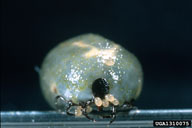
Jim Occi, BugPics, Bugwood.org
Ovipositing female

Jim Occi, BugPics, Bugwood.org
Deer ticks Ixodes scapularis and American dog ticks Dermacentor variablis with 22 50. gauge needle
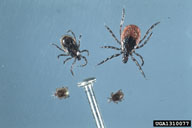
Jim Occi, BugPics, Bugwood.org
adults and nymphs with straight pin

Scott Bauer, USDA Agricultural Research Service, Bugwood.org
ARS tick-control efforts are targeting the female blacklegged tick, Ixodes scapularis, which can lay up to 3,000 eggs in her lifetime. Her young offspring are key links in the transmission of Lyme disease, a flulike illness in humans that can become chronic and progressive if not treated.

Scott Bauer, USDA Agricultural Research Service, Bugwood.org
A nymph-stage blacklegged tick on a leaf. Infected nymphs transmit most cases of Lyme disease.

Scott Bauer, USDA Agricultural Research Service, Bugwood.org
An adult female blacklegged tick, engorged after a blood meal, rests on a leaf.
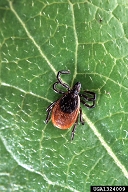
Scott Bauer, USDA Agricultural Research Service, Bugwood.org
blacklegged tick (Ixodes scapularis) adult(s)
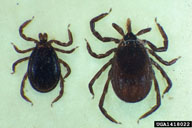
Mat Pound, USDA Agricultural Research Service, Bugwood.org
blacklegged tick (Ixodes scapularis) adult(s)
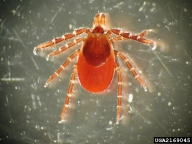
Lisa Ames, University of Georgia, Bugwood.org
dorsal view
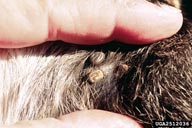
Jim Occi, BugPics, Bugwood.org
Feedings feeding on white-tailed deer.
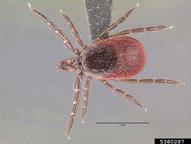
Gary Alpert, Harvard University, Bugwood.org
blacklegged tick (Ixodes scapularis) adult(s)
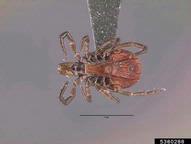
Gary Alpert, Harvard University, Bugwood.org
blacklegged tick (Ixodes scapularis) adult(s)